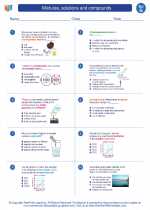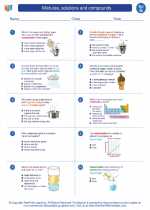The Cambrian Period
The Cambrian Period is the first geological period of the Paleozoic Era, spanning from approximately 541 million years ago to 485 million years ago. It is known for the rapid diversification of life forms, often referred to as the Cambrian Explosion.
Key Concepts to Understand
- Cambrian Explosion: The rapid diversification of multicellular life forms during the Cambrian Period.
- Fossils: Study the fossils found in Cambrian rocks, such as trilobites, brachiopods, and early chordates.
- Paleogeography: Understand the Earth's geography during the Cambrian Period, including the positions of the continents and the distribution of ancient oceans.
- Paleoclimate: Explore the climate conditions during the Cambrian Period and their potential impact on early life forms.
- Evolutionary Significance: Analyze the evolutionary implications of the Cambrian Explosion and its impact on the diversity of life on Earth.
Study Tips
To effectively study the Cambrian Period, consider the following tips:
- Utilize Visual Aids: Use diagrams, maps, and timelines to visualize the geological and biological events of the Cambrian Period.
- Compare Fossil Records: Compare the different types of fossils found in Cambrian rocks and understand their significance in the history of life on Earth.
- Explore Evolutionary Theories: Research the different theories proposed to explain the Cambrian Explosion and evaluate their strengths and weaknesses.
- Engage in Discussions: Participate in group discussions or forums to exchange ideas and gain different perspectives on the Cambrian Period.
- Field Trips and Museums: If possible, visit geological sites or museums with Cambrian fossil exhibits to gain a hands-on understanding of the topic.
Additional Resources
Here are some recommended resources for further exploration of the Cambrian Period:
- National Geographic: Cambrian Explosion
- UC Berkeley Museum of Paleontology: Cambrian Period
- Encyclopedia Britannica: Cambrian Period





